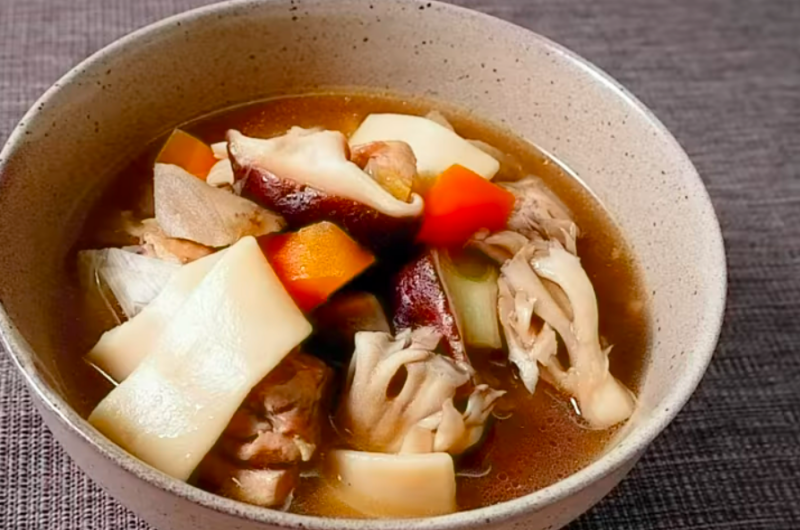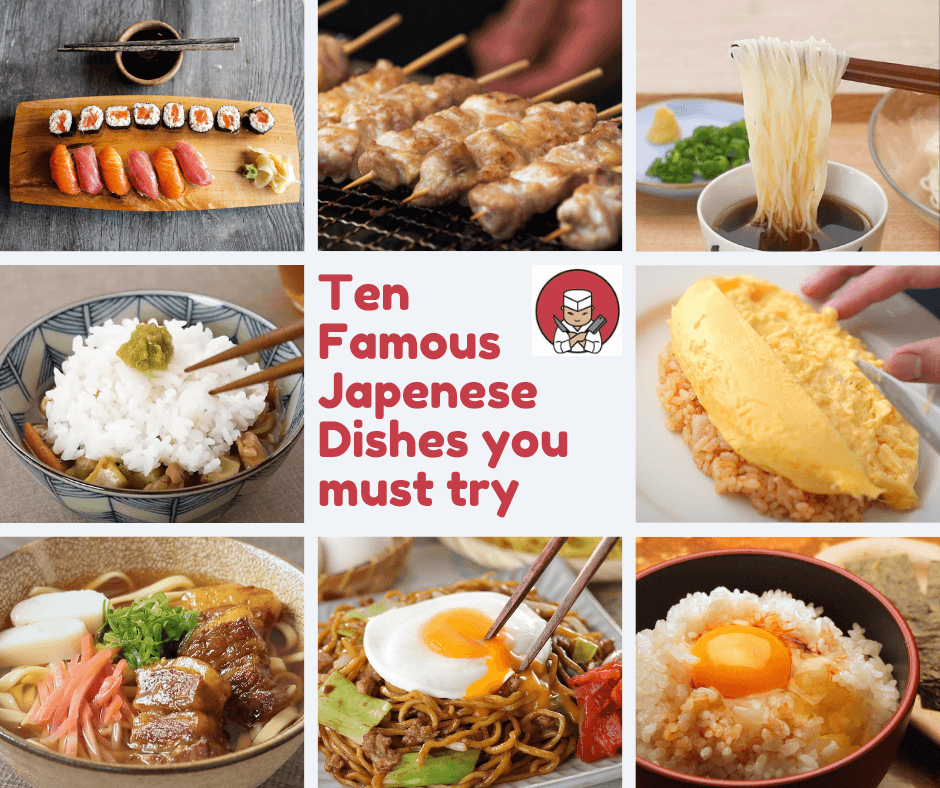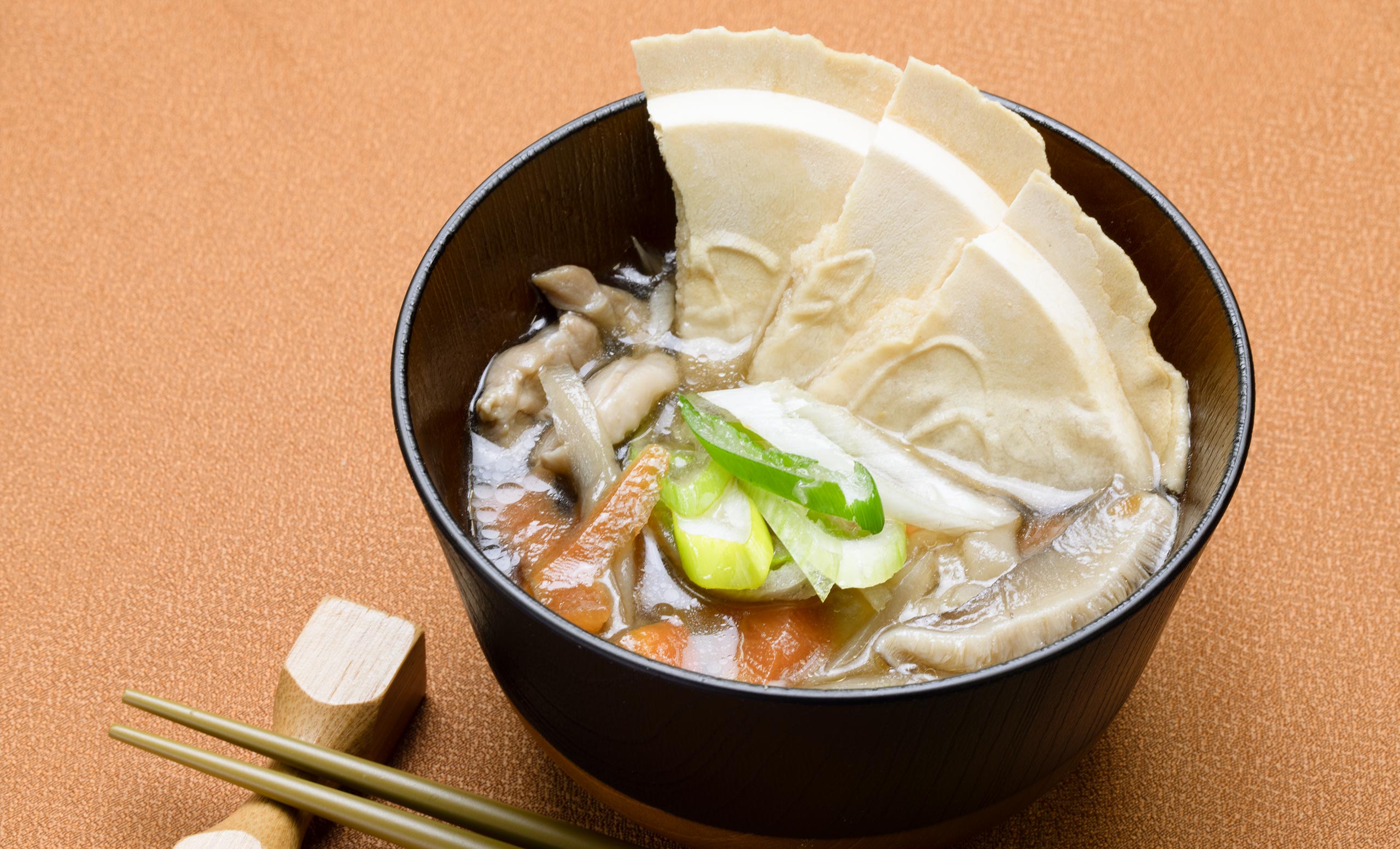
Okkirikomi (おっきりこみ) is a hearty, noodle soup dish popular in Gunma Prefecture (Kanto Region).
It is a simple dish which consists of wide/thick noodles simmered in a miso or soy based soup along with other vegetables.
Outside of Gunma, it can also be found in northern part of Saitama Prefecture. A very similar dish called “Hoto” (ほうとう) is eaten in Yamanashi Prefecture.
The name okkirikomi written with kanji is “切り込み”, which literally means something like “to cut, and put in”. It refers to the way the dish was traditionally made by cutting noodle dough and putting it directly into the soup.
Read on for more interesting info about okkirikomi!
Ingredients
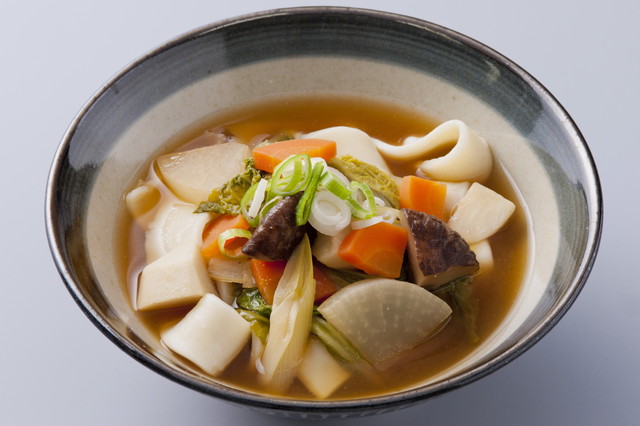
The main ingredients of Okkirikomi are:
- Noodles
- Vegetables
- Dashi
Okkirikomi traditionally uses a wide, thick noodle made from wheat flour. There are technically no “rules” as to how thick the noodles should be, but unlike typical Japanese wheat noodles (i.e. udon), the noodles used in okkirikomi typically do not have salt added.
Various seasonal vegetables can be used in okkirikomi. There are also no rules as to what vegetables must be used. Typically, root vegetables like carrots, daikon, potato, or taro are used. Mushrooms and green onions are also often used.
The soup is usually flavored with miso and/or soy sauce. Compared to other typical Japanese noodle soup dishes, the noodles in okkirikomi are cooked/simmered directly in the soup. This results in the soup being thickened by the flour of the noodles.
Location / Where to Eat
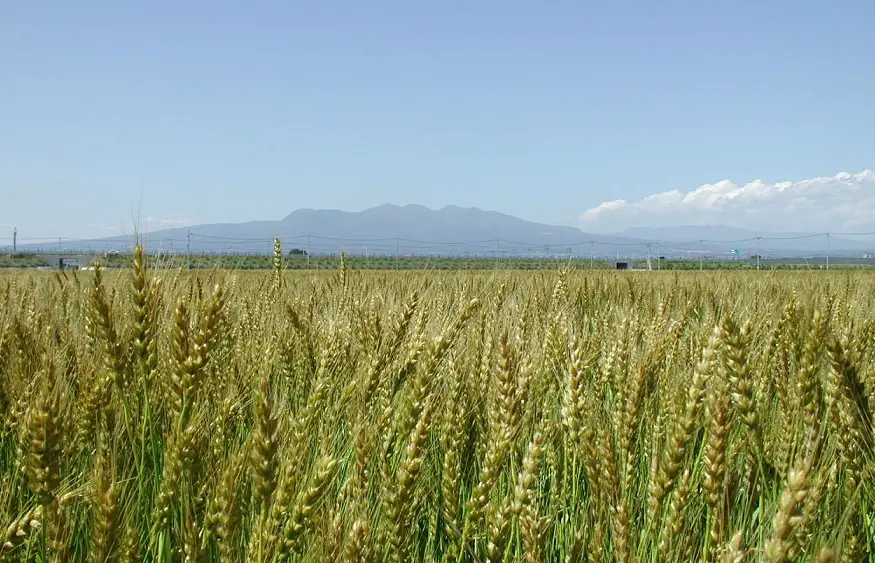
Okkirikomi is a local dish of Gunma Prefecture. It is commonly cooked at home, but can also be found served at local restaurants.
Gunma is famous for its wheat production, thanks to its cold, dry climate in winter. Thus, many popular local dishes in Gunma use wheat flour, such as okkirikomi.
Okkirikomi can also be commonly found in northern Saitama Prefecture (which is right next to Gunma).
Depending on which area of Gunma you are in, the dish may be referred to differently. In the Nakamo and Tomo regions of Gunma it is sometimes called “niboto” (煮ぼうと).
History / Origin of Okkirikomi
The original version of okkirikomi was a dish that was introduced to Japan from China and was eaten in the Kyoto Imperial Court.
It is said that a man named Yoshishige Nitta (新田 義重), learned to make the dish while working as an assistant cook in charge of the ingredients for the Imperial court.
He enjoyed eating it, so after returning to his home state of Ueno Province (current day Gunma), he continued to make the dish, and passed it down to his family.
Around the middle of the Edo period, the dish became popular as stone mills (for making flour) became more common.
How to Make Okkirikomi
Making okkirikomi is not super difficult. Simply stir fry some ingredients, simmer them in a soup, add your noodles, and you’re done!
Of course, there are a bit more details to make it extra delicious. To make “authentic” Okkirikomi, you will also need to buy some unsalted, thick/wide noodles from Gunma Prefecture.
If you’re not in Japan though, just try to find the widest noodles you can as the Japanese/Asian supermarket, or online.
Check out the recipe below to make your own okkirikiomi at home! (Original recipe adapted from kurashiru)
Easy Okkirikomi Recipe: Gunma Noodle Stew
Course: MainCuisine: JapaneseDifficulty: Easy1
servings20
minutes15
minutes35
minutesHere is an easy recipe to make Gunma’s famous okkirikomi. Feel free to substitute any ingredients you don’t like (or don’t have). Try to add other ingredients like taro, potatoes, or other types of mushrooms.
Ingredients
Okkirikomi noodles … 1 ball /serving
Chicken thigh … 80g
Napa cabbage / Chinese cabbage … 100g
Daikon … 50g
Maitake mushrooms … 40g
Burdock root … 40g
Water (for soaking) … Appropriate amount
Carrot … 20g
Shiitake mushroom … 1
Green onions (20g) … 10cm
Water … 400ml
Instant dashi granules …1 teaspoon
- Seasoning
Soy sauce … 1 tablespoon
Cooking wine … 1 tablespoon
Mirin … 1 tablespoon
Sesame oil … 1/2 tablespoon
Directions
- Prep
- Peel the radish and carrots. Scrape off the skin from the burdock root.
- Cut the Chinese cabbage in half lengthwise and then into 1cm pieces. Cut off the ends of the maitake mushrooms and break them apart by hand.
- Cut the stems off the shiitake mushrooms and cut them in half. Cut the green onions diagonally into 1cm wide pieces.
- Cut the daikon radish and carrot into small pieces. Cut the burdock root into chunks, put it in a bowl filled with water for about 5 minutes, then drain.
- Cut the chicken thighs into bite-sized pieces.
- Cook
- Heat sesame oil in a frying pan over medium heat, add chicken and stir fry until it changes color.
- Add carrots, daikon, and burdock root to pan and stir-fry over medium heat until the oil is evenly coated. Add water and Japanese-style dashi granules and bring to a boil. Cover and simmer over medium heat for about 5 minutes until the burdock becomes soft.
- Add the Napa cabbage to the pan, cover and simmer over medium heat for about 3 minutes until the shiitake mushrooms are cooked through.
- When the chicken thighs are cooked through, add all the seasoning ingredients, and Okkirikomi noodles. Cook/simmer the noodles according to the instructions on the package, then remove from the heat.
- Put everything in a bowl, and enjoy!
Recipe Video
Notes
- If you can’t get Okkirikomi noodles, you can perhaps try some wide Chinese noodles (or make some from scratch)
Fun Facts
- Okkirikomi was selected as one of the “Top 100 Dishes from Rural Areas” in 2007 (農山漁村の郷土料理百選)
Summary
Have you ever tried okkirikomi before? What did you think of it?
Leave your thoughts and comments below!
Subscribe for free today! Receive cool recipes, my latest Japanese knife picks and learn about Japanese culture. Delivered every other week to your inbox.
